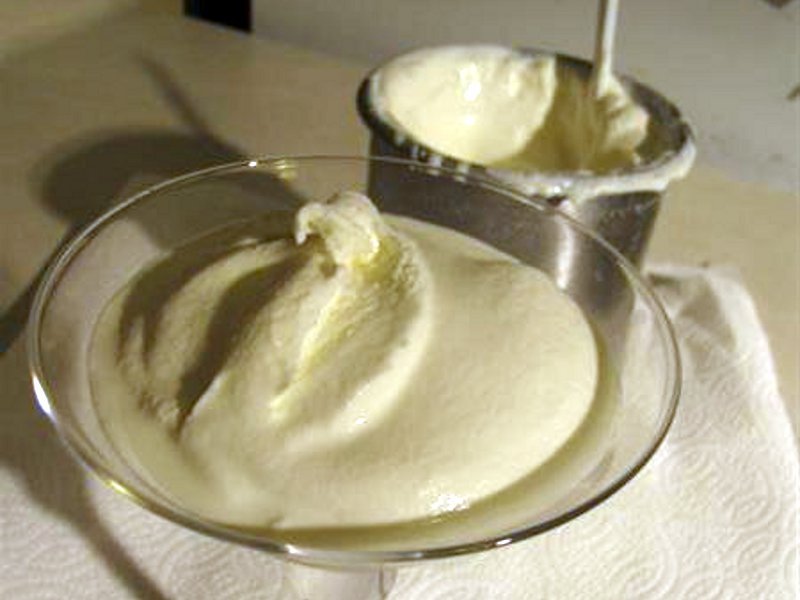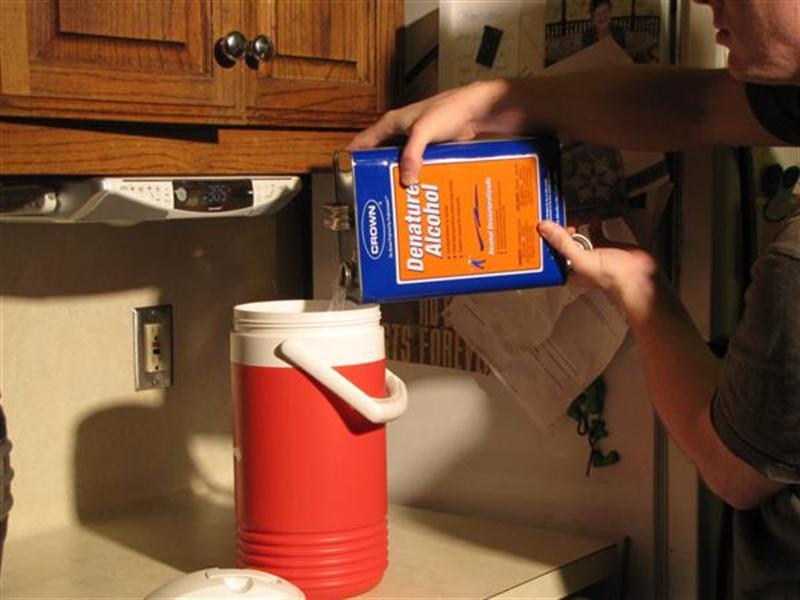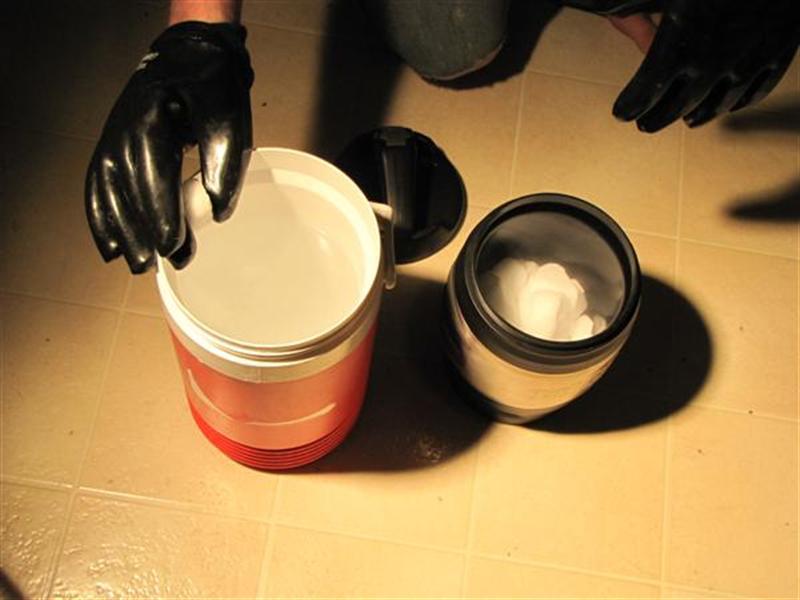Making ice cream with cryogens stronger than water ice is a fairly common chemistry demonstration stunt. The ideal way to do it is with liquid nitrogen, which is poured directly into the ice cream mixture, with stirring, and causes it to set up in about 10 minutes. Liquid nitrogen, however, can be rather difficult to get your hands on. Most major cities have a supplier that will sell it to you, but very often they have large minimum orders and/or require that you own an expensive dewar flask into which they may safely dispense the liquid nitrogen. At -196 C, liquid nitrogen is also fairly dangerous to handle.
Dry ice is a much more accessible cryogen; it’s available at several major grocery stores in the Austin area, for instance, and I imagine the same is true in other parts of the United States. It sublimes at -78 C, and is thus vastly more effective at freezing stuff than water ice at 0 C. You can make ice cream, just as with liquid nitrogen, by adding dry ice directly to the ice cream mixture. However, because dry ice is frozen carbon dioxide, this procedure results in carbonated ice cream. Which can be quite delicious. But say you don’t want carbonated ice cream?
This procedure borrows from a common technique in the organic chemistry laboratory for cooling reactions to sub-zero temperatures. Instead of using ice water to cool to 0 C, you make a bath of dry ice in some volatile solvent that will not freeze at dry ice’s sublimation temperature of -78 C. Obviously, you can’t use dry ice in water because the water will freeze solid. In the laboratory, acetone and isopropyl alcohol are common coolants. Acetone, however, can be dangerous if handled improperly, and isopropyl alcohol in sufficient quantities to make a large bath can be rather expensive.
I have discovered, however, that denatured ethanol, which is available in hardware stores everywhere, is reasonably priced and makes a good bath with dry ice. Denatured alcohol is also much safer to handle than acetone. Depending on the denaturant, it is also the least toxic of the various hardware-store solvents. In any case, done with reasonable care, this procedure involves no significant risk of contact between the ice cream itself and the coolant. And although denatured alcohol is quite flammable, the dry ice temperature of -78 C is well below its flash point at 13 C, which means that, once the bath is cool, there is no danger of the alcohol vapor igniting from a stray spark. To err on the safe side, however, you should be sure to work in a well-ventilated area.














